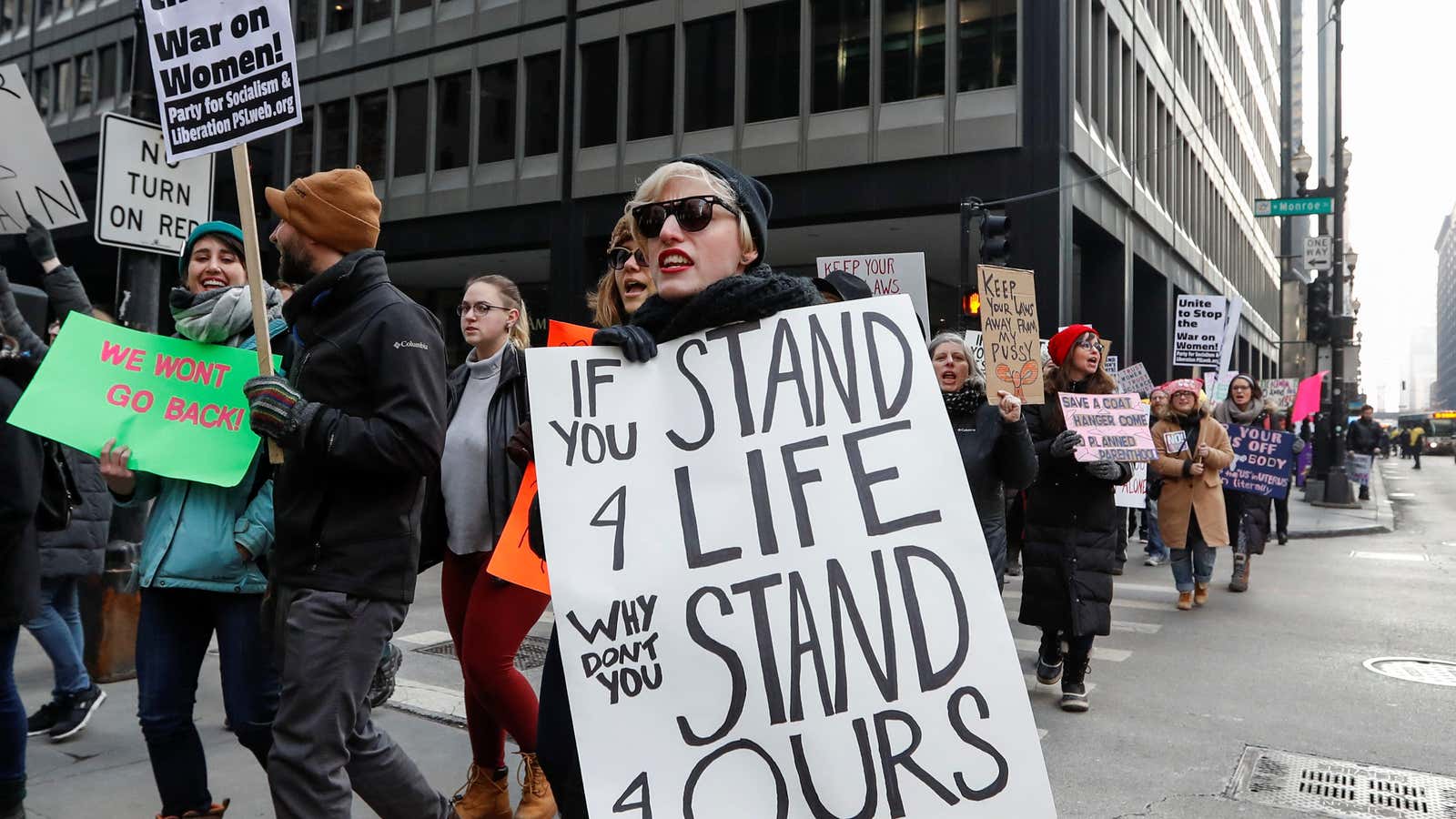In 1973, the US Supreme Court decision in the case of Roe v. Wade declared unconstitutional state laws that ban abortion. That year, the national abortion rate was 16.3 per 1,000 women between the ages of 15 and 44.
Over 40 years later, the abortion rate in the US has dropped below 1973 levels. According to a new study from the Guttmacher Institute, in 2014 the abortion rate was 14.6—down from its peak of 29.3 in 1980 and 1981.
The falling numbers are at least in part because of the ongoing political attack on abortion access in the US. Since 2010, 231 new state abortion restrictions have been adopted across America.
“Abortion restrictions and clinic closures mean that patients may need to travel greater distances to access services,” says Rachel Jones, lead author of the study. “While many find ways to access care despite these obstacles, some of the abortion rate decline is likely attributable to women who were prevented from accessing needed services.”
It’s not all bad news though. The report also notes that the decline can also be partly attributed a fall in the unintended pregnancy rate, because of improved access to contraceptives in recent years.
What happens next for American women’s right to choose and access to family planning is hazy. Last week, during his Senate confirmation hearing, Jeff Sessions, president-elect Donald Trump’s pick for attorney general, pledged to uphold and “respect” Roe v. Wade. But there’s little reason to believe him based on his actual track record. And Trump himself has been unclear on his stance on abortion rights.
